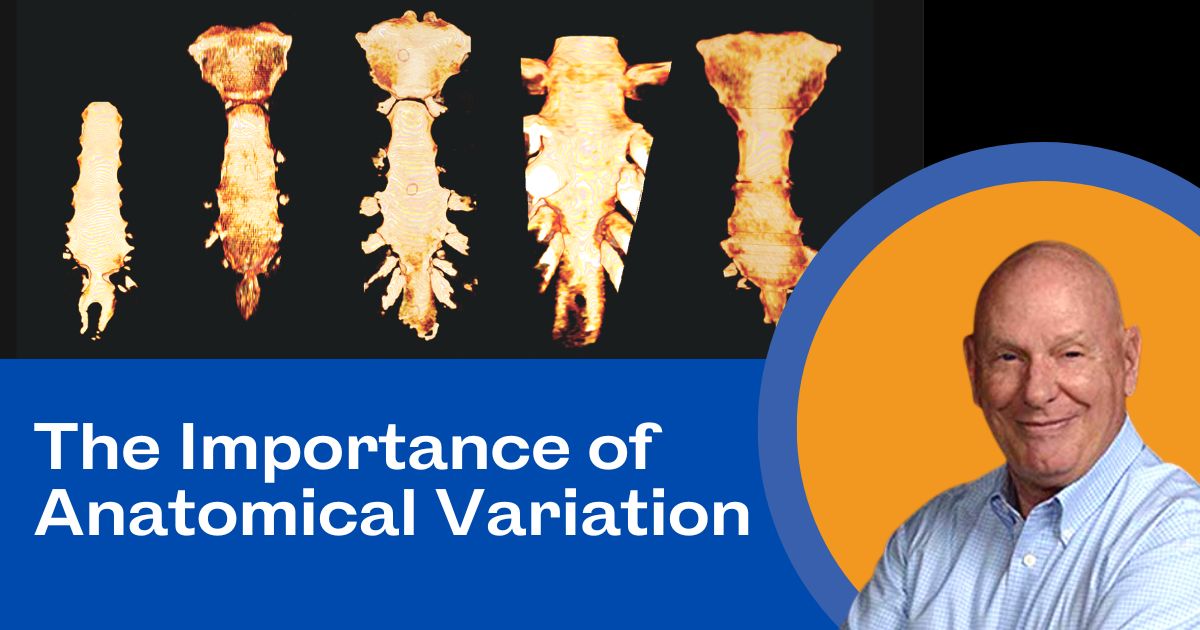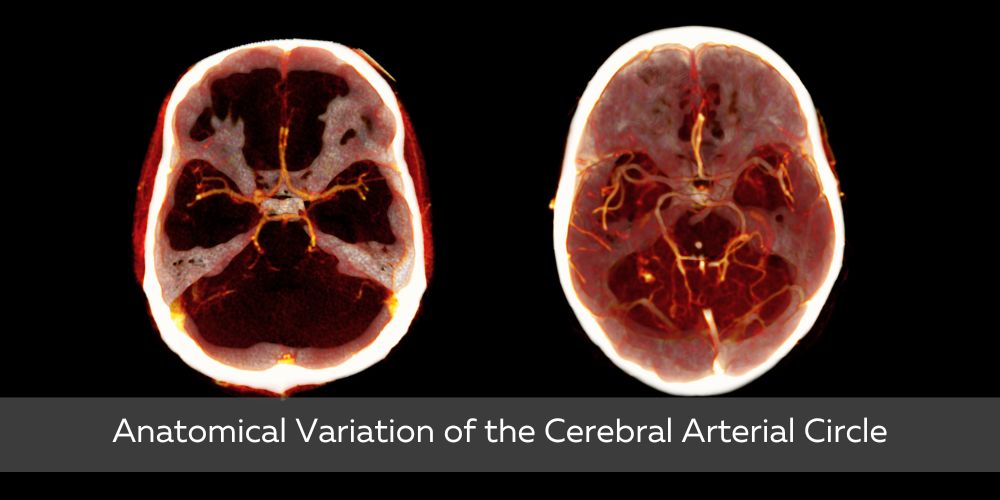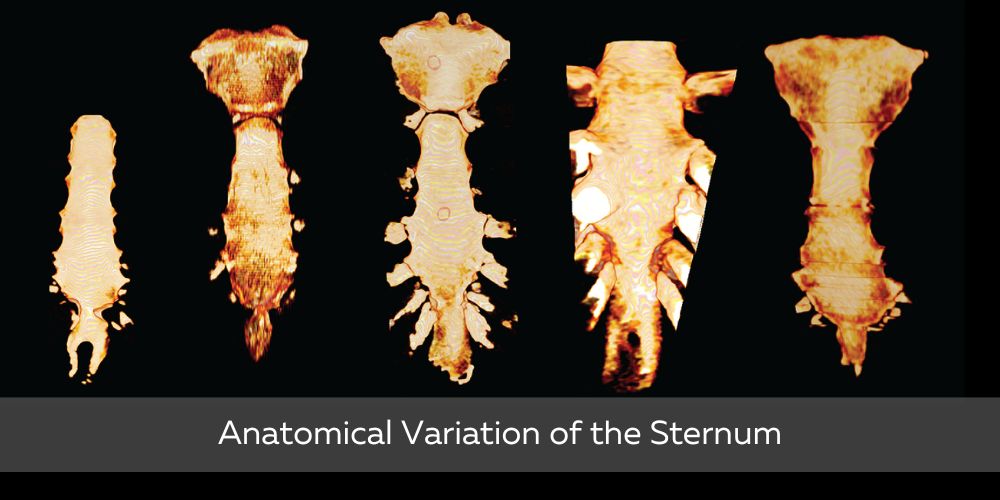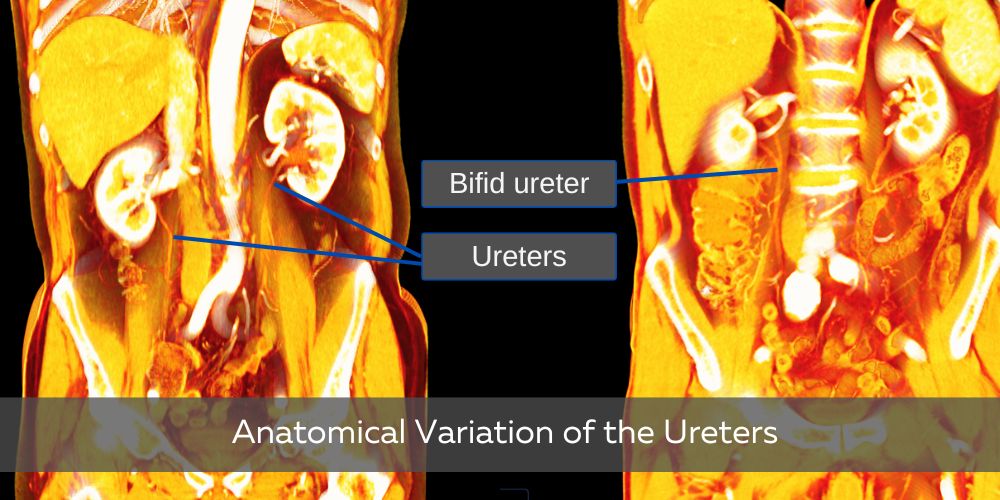The Importance of Anatomical Variations
by Robert Tallitsch, PhD | November 10, 2022

I taught Human Anatomy, Neuroanatomy, and Cadaver Dissection at my college for 43 years and I can’t remember the number of times during an academic term a student would call me over to the dissection table and ask, “Is this normal Bob?” or how amazed students would be when, upon partially flexing their wrist, they found out that they didn’t have a palmaris longus muscle. Most first-time anatomy students, and even students that are taking an advanced-level anatomy course involving dissection, are amazed upon encountering one or more anatomical variations in the cadaver they are dissecting. Yet, anatomical research demonstrates that, among the wide variety of anatomical variations, one can observe that:
- successful sprinters have unusually long calcanei, thereby giving their calf muscles better than average leverage and torque;
-
some individuals have extra or missing ribs, or an extra or missing vertebra;
-
the number and anatomical direction of the nerves in the heel may demonstrate considerable variation, with some individuals having three medial calcaneal nerves;
- some individuals have a posterior kneecap, termed the fabella, embedded in the tendon of the gastrocnemius muscle.
Pointing out anatomical variations, along with a variety of other teaching pedagogies, helps students understand that the anatomy we read about in textbooks and the anatomy we teach in the classroom or lab is the “average” or “typical” anatomy of everyone sitting in the classroom or of those bending over the dissection tables. But therein lies a problem — very few anatomy textbooks spend much, if any time, dealing with anatomical variations. In addition, anatomical models and most anatomical software packages today include no or very few anatomical variations that may be seen within the human body. Therefore, unless you are able to utilize cadaver dissection or prosected cadavers in your anatomy laboratory (which is rare for undergraduate or community colleges) how does one allow their students to visualize anatomical variations — be they are rare or “relatively” common? BodyViz, the 3D virtual anatomy software that renders real patient data directly into interactive visualizations, does just that, providing students with a firm 3-dimensional understanding of both normal anatomy and examples of anatomical variations that are seen in real patients. Take the following anatomical variations as examples:
Variations in the Cerebral Arterial Circle (also known as the Circle of Willis)
The cerebral arterial circle, or circle of Willis, is formed by the interconnection of the internal carotid arteries and the basilar artery. This structure encircles the infundibulum of the pituitary gland, and enables the brain to receive arterial blood from the carotid and/or vertebral arteries, thereby reducing the likelihood of interrupted blood flow to the brain.
However, research demonstrates that variations in the structure of the cerebral arterial circle may be found in 27% to 87% of the specimens (living or cadaveric) examined. Below are two common variations seen in the cerebral arterial circle, as exemplified in BodyViz’s 3D interactive visualizations from data of real human anatomy.

Variations in the Xiphoid Process of the Sternum
The xiphoid process of the sternum serves as one of the origins of the diaphragm, and also serves as one of the insertions of the rectus abdominis. In most individuals the xiphoid process is the smallest part of the sternum and is a straight, singular bony extension found inferior to the body of the sternum. Yet the xiphoid process is often found possessing foramina, or may be bifid, trifid, curved, abnormally broad or deflected in shape. Several examples of variations in the anatomy of the xiphoid process that may be found in BodyViz are seen below.

Variations in the Anatomy of the Ureter
The ureters are a pair of retroperitoneal muscular tubes that pass inferiorly from the kidneys to the urinary bladder. They are typically found to lie inferiorly, medially, and superficially to the psoas major muscles. As with other organs, anatomical variations of the ureter have also been found. For example, variations in ureter anatomy are not atypical, with research demonstrating a bifid ureter found in between 6.25% to 8.3% of the cadaveric specimens examined, and 8.3% of the cadavers examined demonstrated incomplete, duplicated ureters.

BodyViz stands out from other virtual anatomy platforms and even cadaver dissection as it allows for detailed exploration in normal and variant examples of real human anatomy. The dataset library contains hundreds of 3D visualizations of all twelve systems rendered from real patient data, ranging from 90-year-old patients to fetuses. BodyViz also enables users to upload their own MRI and CT scans into the software, turning their DICOM data into an interactive 3D visualization of their own anatomy that they can virtually dissect and explore in incredible detail. BodyViz solutions can scale to any teaching environment and flex to any pedagogical approach, providing students in all stages of their academic careers access to real human anatomy.
For more information regarding BodyViz 3D virtual anatomy solutions, schedule a demo at your convenience and follow the links below.
Schedule a Demo
Helpful Links:
References:
Apazidis, A. et al. (2011) The prevalence of transitional vertebrae in the lumbar spine. Spine J. 11:858-862.
Choudhary, U. et al. (2017) A cadaveric study on anatomical variations of kidney and ureter in India. Int. J. Res Med Sci. 5:2358-2361.
Driessen, A. et al. (2014) The fabella syndrome – a rare cause of posterolateral knee pain: A review of the literature and two case reports. BBC Musculoskelet Disord. 15:100.
Govsa, F. et al. (2006) Variations in the origin of the medial and inferior calcaneal nerves. Arch Orthop Trauma Surg. 126:6-14.
Kauundal, A.P.K & Kaundal, P.K. (2017) A cadaveric study of anatomical variations of kidney and urether in a tertiary care teaching hospital. Indian J. Basic and Applied Med Res. 6:300-305
Mittal, M.K. et al. (2016) Congenital anomalies of kidney and ureter. Anat Physiol. 6:190-200.
Siddiqi, H. et al. (2013) Variations in cerebral arterial circle of Willis in patients with hemorrhagic stroke: A computed tomography angiographic study. JRMC 17:215-218
Singh, R. et al. (2017) Anatomical variations of circle of Willis – a cadaveric study. Int Surg J. 4:1249-1258
Yaseen, S. et al. (2016) Variations in the brain circulation – the circle of Willis. Indian J. Neurosci. 2:37-42